The book is written for sailors and coaches to get the most out of their training. It covers all aspects of racing from starting to downwind, tacking to mark rounding and everything between.
There are a variety of exercises for each area and each exercise is classified by the colour of the box and symbols in the title:

Classification of the exercises
GYBING
Choosing The Gybe For The Conditions
Although the hand and feet movements may seem very similar when tacking and gybing, the end goal is very different: in fact, it is the opposite. When gybing from run to run, we are looking to maximise our gain made downwind. That is our focus: not how fast we can come out of the turn but, 20 seconds after the gybe: how much progress we have made downwind? In recent years with the increased use of drone footage we have been able to see this really clearly. Practice is very important here: try different angles, in different wind speeds and see what works best.
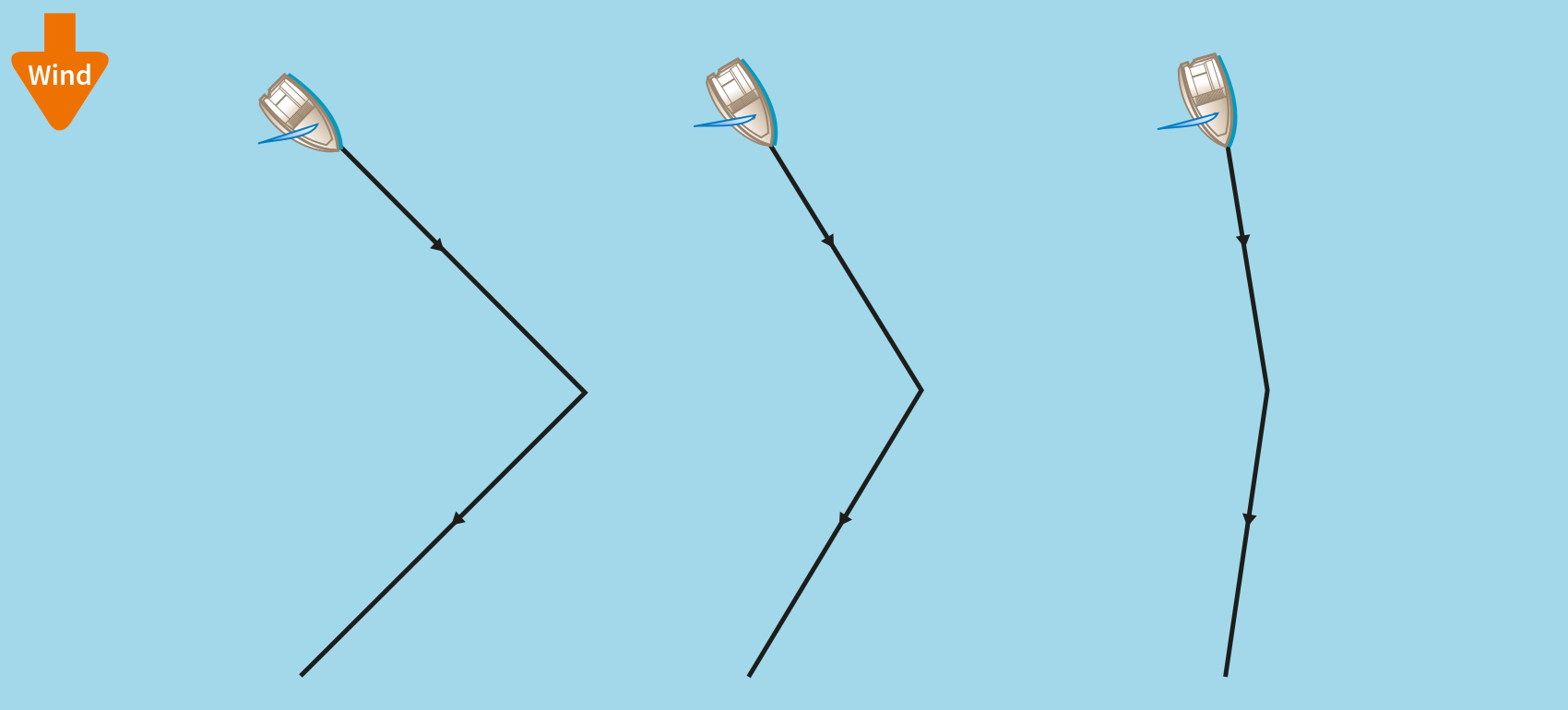
Gybing downwind – speed or distance, which is better?
Spinnaker work is all about talking, good communication, where and when are you going to gybe. So, unlike a one-sail boat where you may just exit the gybe on the new desired course, you may initially need to go slightly high to help fill the spinnaker which will then generate apparent wind, allowing you to bear away. Alternatively, you might need to keep low, until all the crew are safely across to the new windward side of the boat, before heading up.
It is also important to note that the faster we are on entry to the gybe, the better the flow of water over the foils and so the safer the gybe is. Go for it… full speed!
Respect The Manoeuvre
Sometimes there is more of an element of fear of the gybe than there is for the tack, and this helps no one. We need to respect the gybe but be brave. Thinking about what could go wrong, rather than focusing on what we need to do, is counterproductive. The mind is a powerful thing. If someone says ‘don’t think about pink elephants’, it is very hard not to think about pink elephants… in other words we don’t really process negatives. So, the focus always needs to be on something positive, like moving across the boat quickly and smoothly (not like a pink elephant!).
Few people have the same concerns about tacking. After all, if you do capsize, it is normally a slower thing and often to leeward and it can usually be saved easily by simply allowing the boat to go head to wind. This is not the point. Training to Win is about winning races and every centimetre we can gain on a tack or gybe counts. It is just that the distance is greater / more noticeable with gybes.
The key to a good gybe is:
- Body movement
- Sheeting
- Steering
which are all done in sync. To improve this, you can stop doing one element (for example, put the sheet in the cleat!) to help you really focus on the other two.

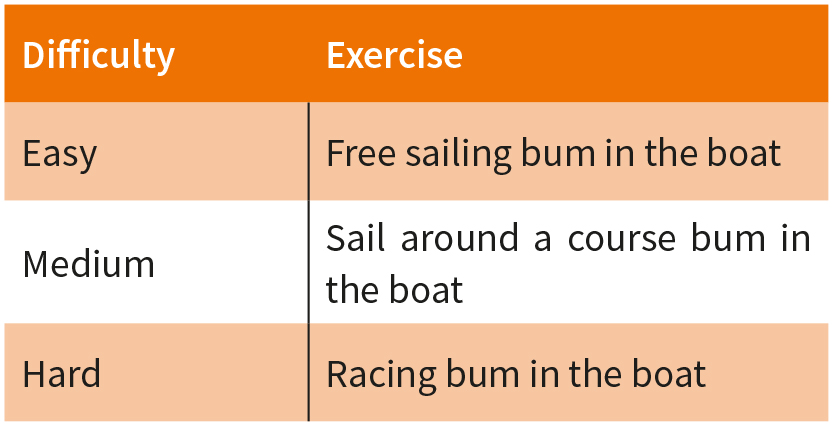
Bum in the boat with different degrees of difficulty
Race Strategy
Gybing is a vital part of race strategy. Long gone are the days where we just raced around triangles and the downwind leg was just how we got to the next upwind leg. It is now a good (perhaps the best) opportunity to gain places. Therefore, just like in the upwind leg, we need to gybe to get the gusts or the pressure as well as gybing on the shifts – here we want the headers, to take us as directly downwind as possible.
It is worth noting that there will be fewer shifts and gusts on the downwind leg than upwind because we are sailing away from them, rather than towards them. The pressure (a fixed area of stronger wind usually caused by a topographical feature) will remain in the same place.

Gybe for the pressure because there is more wind by the shore when the shore is on the left in the Northern Hemisphere
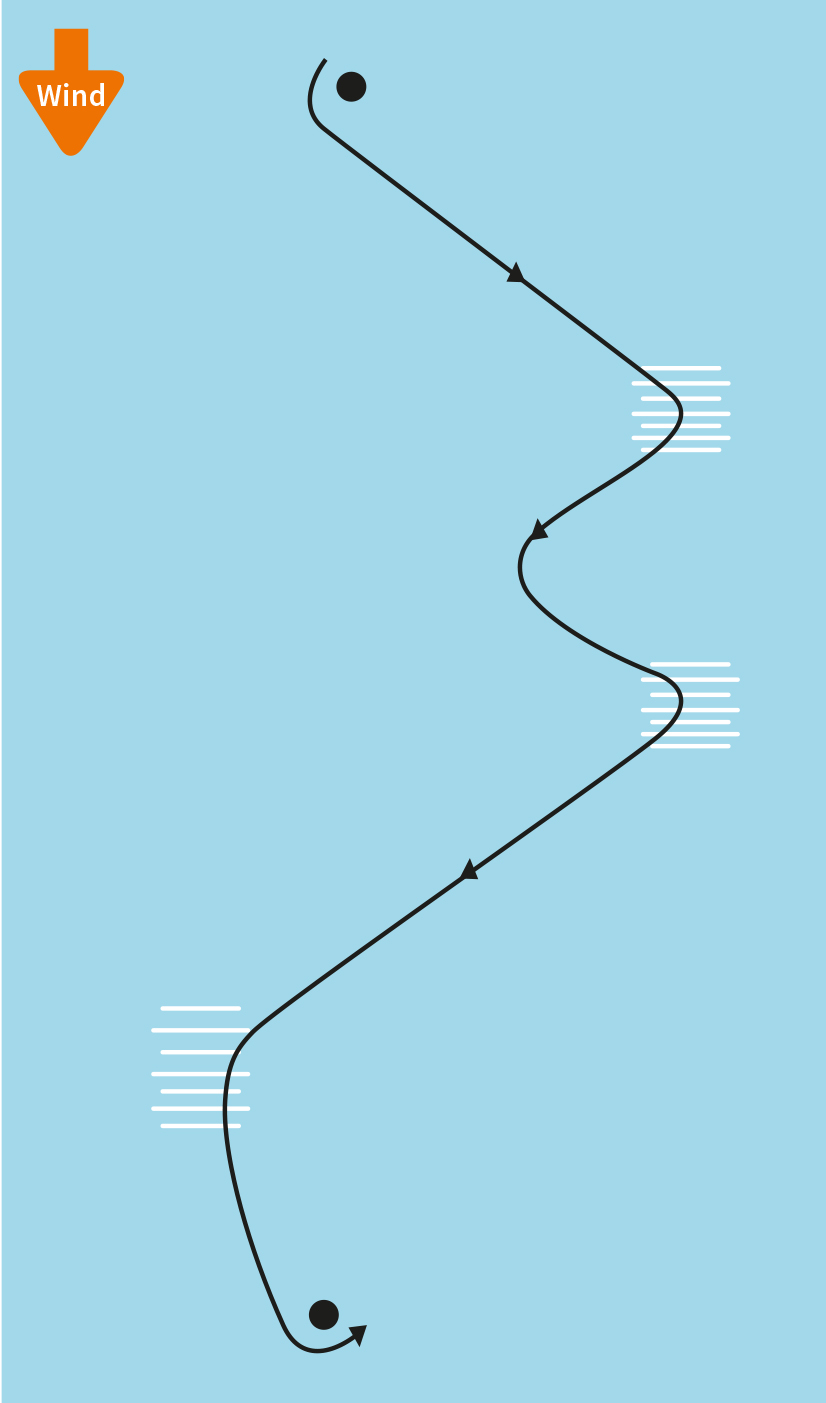
Gybe for the gusts
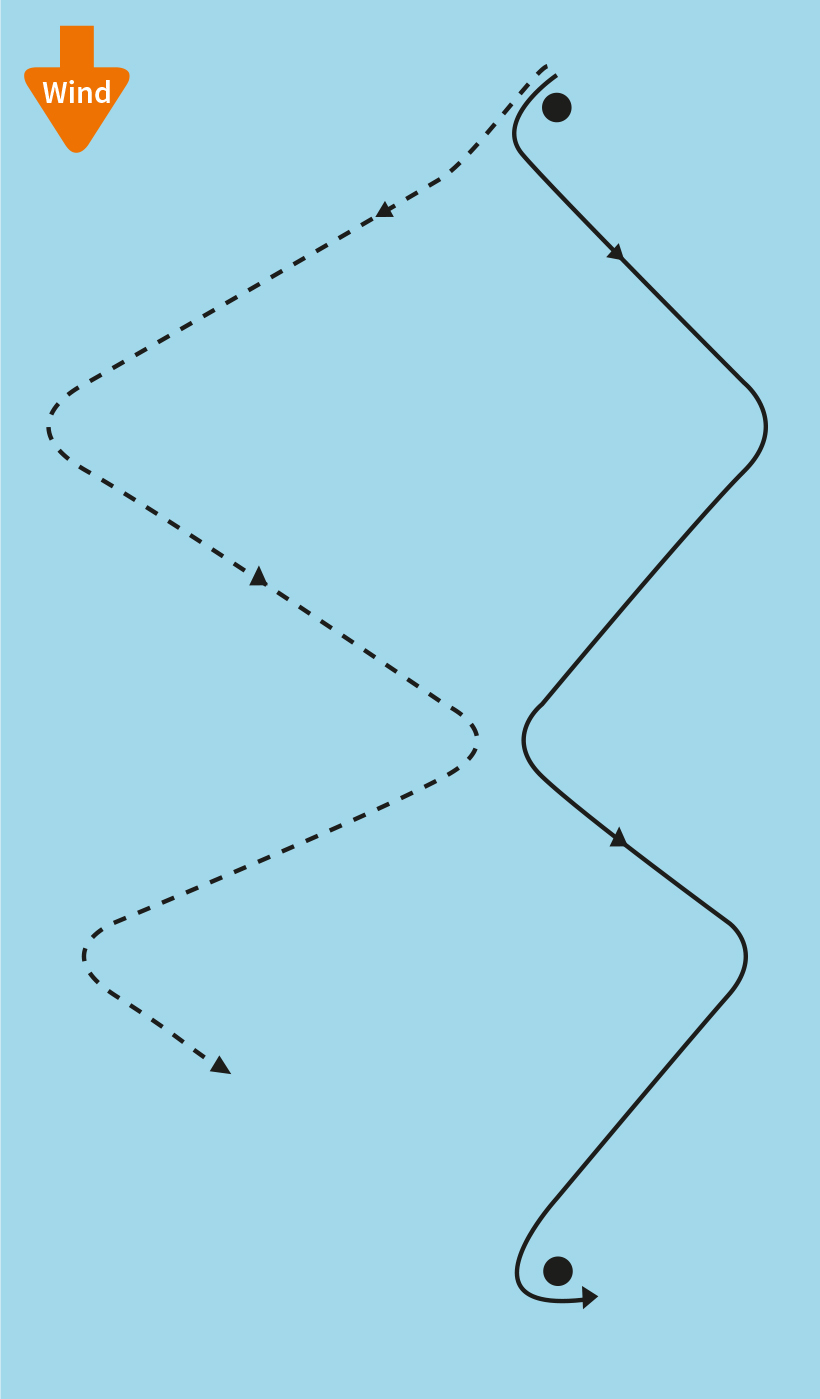
Gybe for the shifts and sail less distance
Gybing Exercises
If we have identified gybing as a weakness (which it often is) we need to maximise the number of gybes performed during training. The difficulty is that it is tempting to practise what we are good at, rather than what we need to (because we are not so good at it). So, let’s look at how we can add more gybes into our training sessions.
Three variations of the upwind exercises can work very well for sailing downwind and practising gybing.
In addition, when doing short races and someone is over the line, having to do one gybe upwind rather than going back through the line can be a suitable penalty for a premature start, because it is good to keep the racing as close as possible.
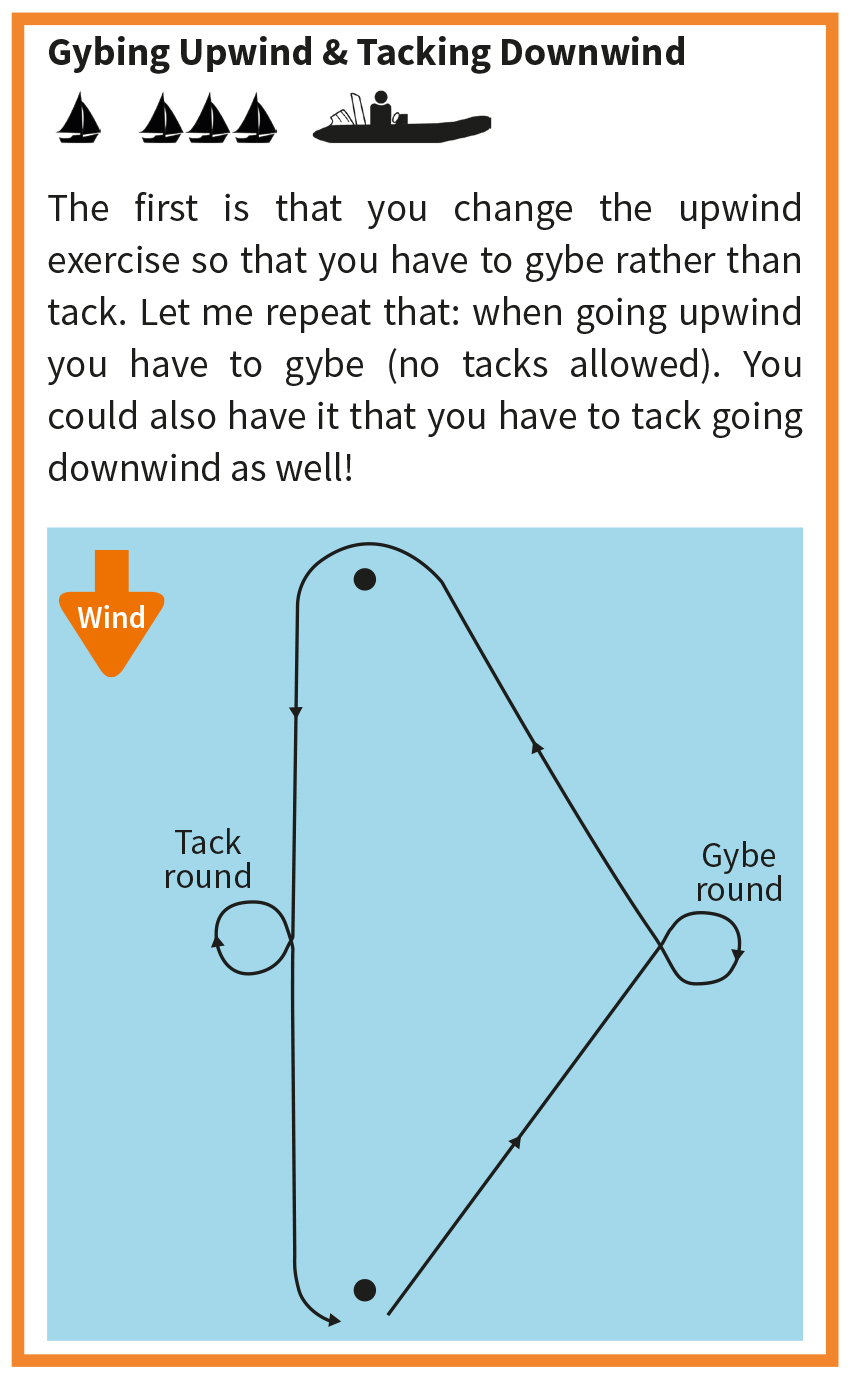
Gybing upwind & tacking downwind
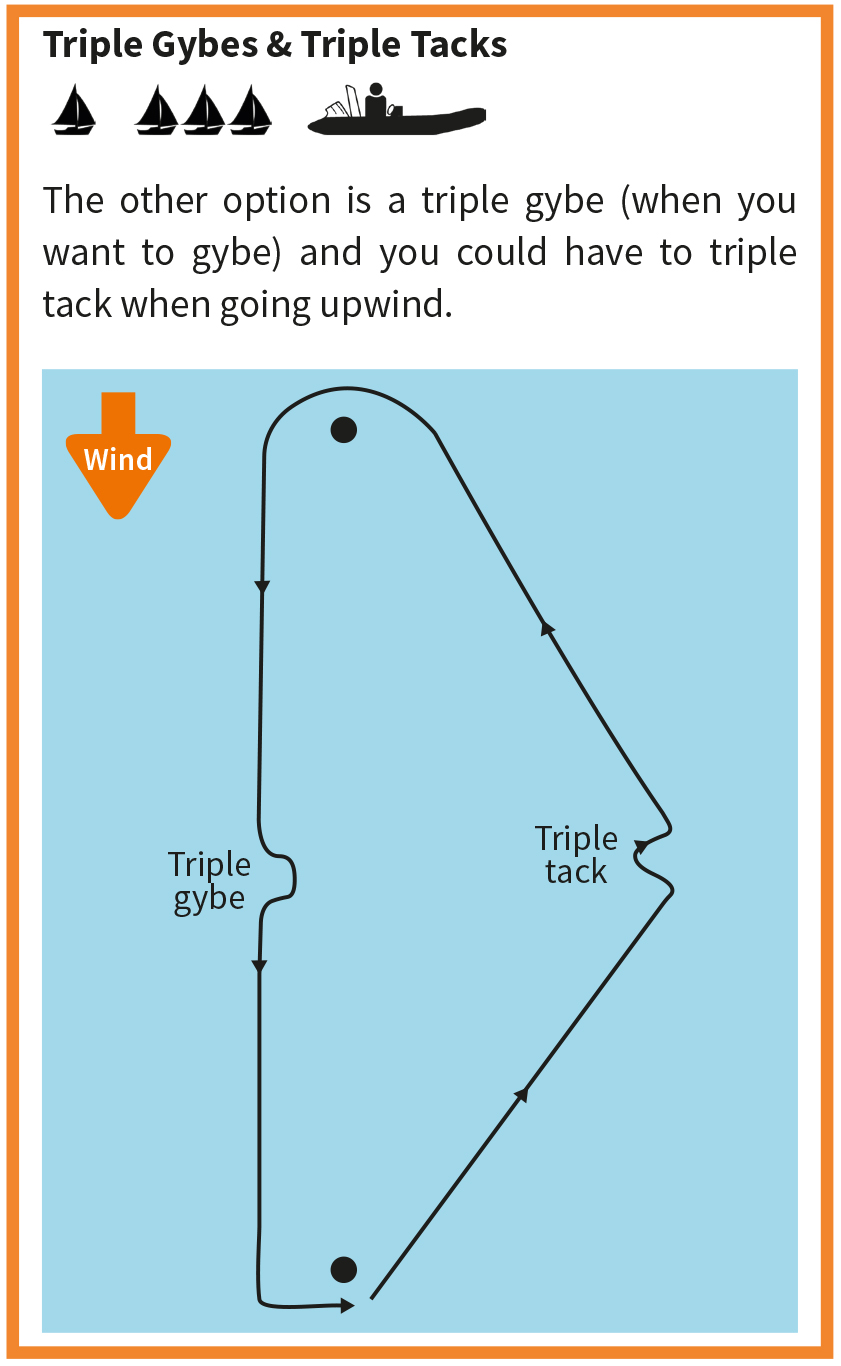
Triple gybes & triple tacks
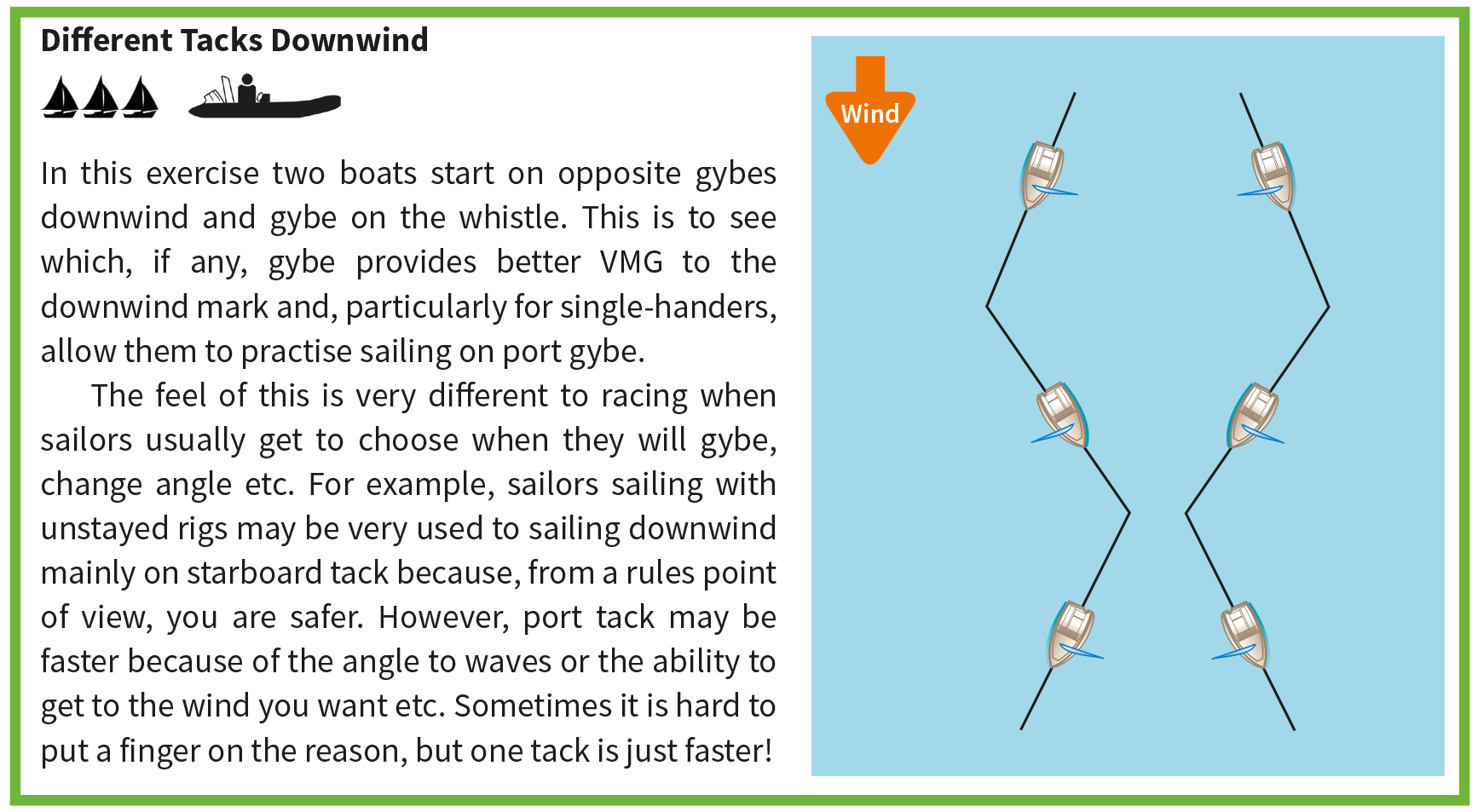
Different tacks downwind
Training to Win is written by multiple world champion and gold medal winning coach Jon Emmett. It provides training exercises for individual boats and groups of boats with or without a coach.
To get more of Jon Emmett’s training exercises, Training to Win can be bought here
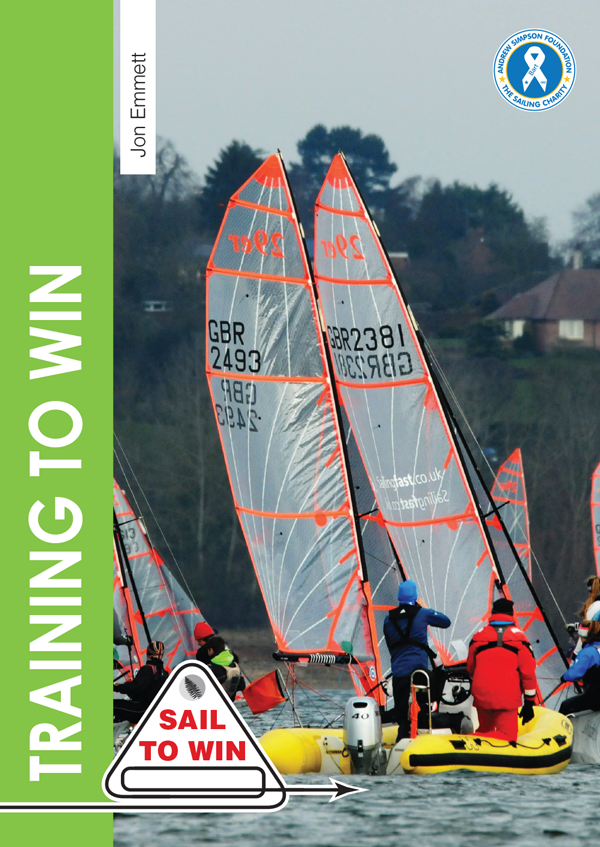
© Not to be reproduced without written permission from Fernhurst Books Limited.